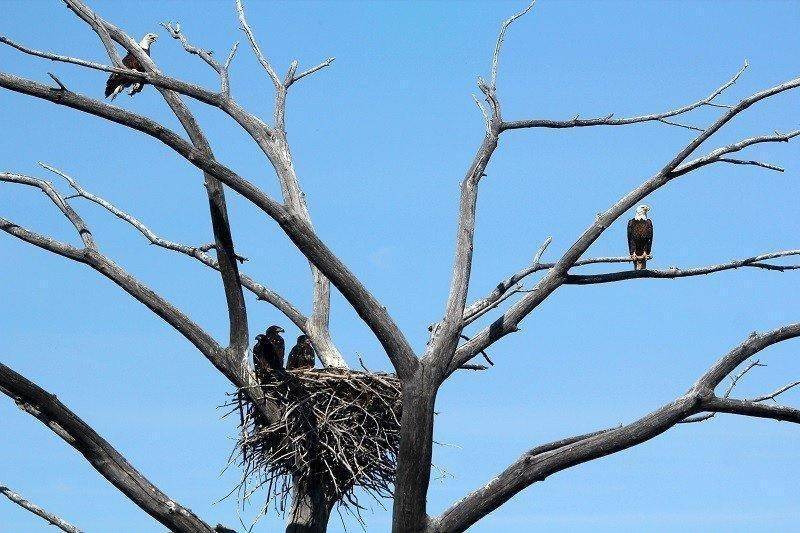DWR Press Release
Family includes three baby eaglets
Salt Lake City — You can see two adult bald eagles—and their three baby eaglets—during free field trips in June.
The Division of Wildlife Resources will host the field trips on Thursday, June 16 and Saturday, June 18. To participate, meet at the Department of Natural Resources, 1594 W. North Temple in Salt Lake City at 6 p.m. each evening. From the building, you’ll follow Bob Walters, Watchable Wildlife coordinator for the DWR, to the viewing site near the southeastern shore of Great Salt Lake.
The field trips are free, but reservations are required. To reserve a spot, call Walters at 801-209-5326.
Walters will bring some spotting scopes and binoculars with him, but if you have your own optics, please bring them. “Also,” he says, “dress for warm weather. And, in addition to bringing binoculars or a spotting scope with you, I strongly recommend bringing mosquito spray, sunscreen and water too. All of these items will help you have a fun time watching the eagles.”
You can leave the viewing site any time during the evening.
Eaglets starting to hop, flutter and dance
During the free field trips, there’s a good chance you’ll watch as the eaglets prepare to fly for the first time.
Walters says you should see the eaglets dancing on their nest, beating their wings and making short “touch and go” flights between the nest and branches on the manmade structure the nest rests on.
“All of these antics are part of the build up to that magic moment when the eaglets fly away from the nest for the first time,” Walters says.
The eaglets should be nine to 10 weeks old when the field trips are held.
Nesting bald eagles in Utah
In addition to the site where the June field trips will occur, Walters says there are at least 22 other active bald eagle nest sites in Utah. “And there could be more nest sites we haven’t found yet,” he says.
1996 was the first year bald eagles nested at the site where the June 16 and June 18 field trips will be held. Since then, eagles have raised 42 eaglets at the site. “That’s a lot of eaglets for one site,” Walters says.
Walters attributes most of the nesting success to quality habitat in this area near Great Salt Lake. “Habitat within the greater Great Salt Lake area is important to these eagles and many other species of wildlife,” he says.

